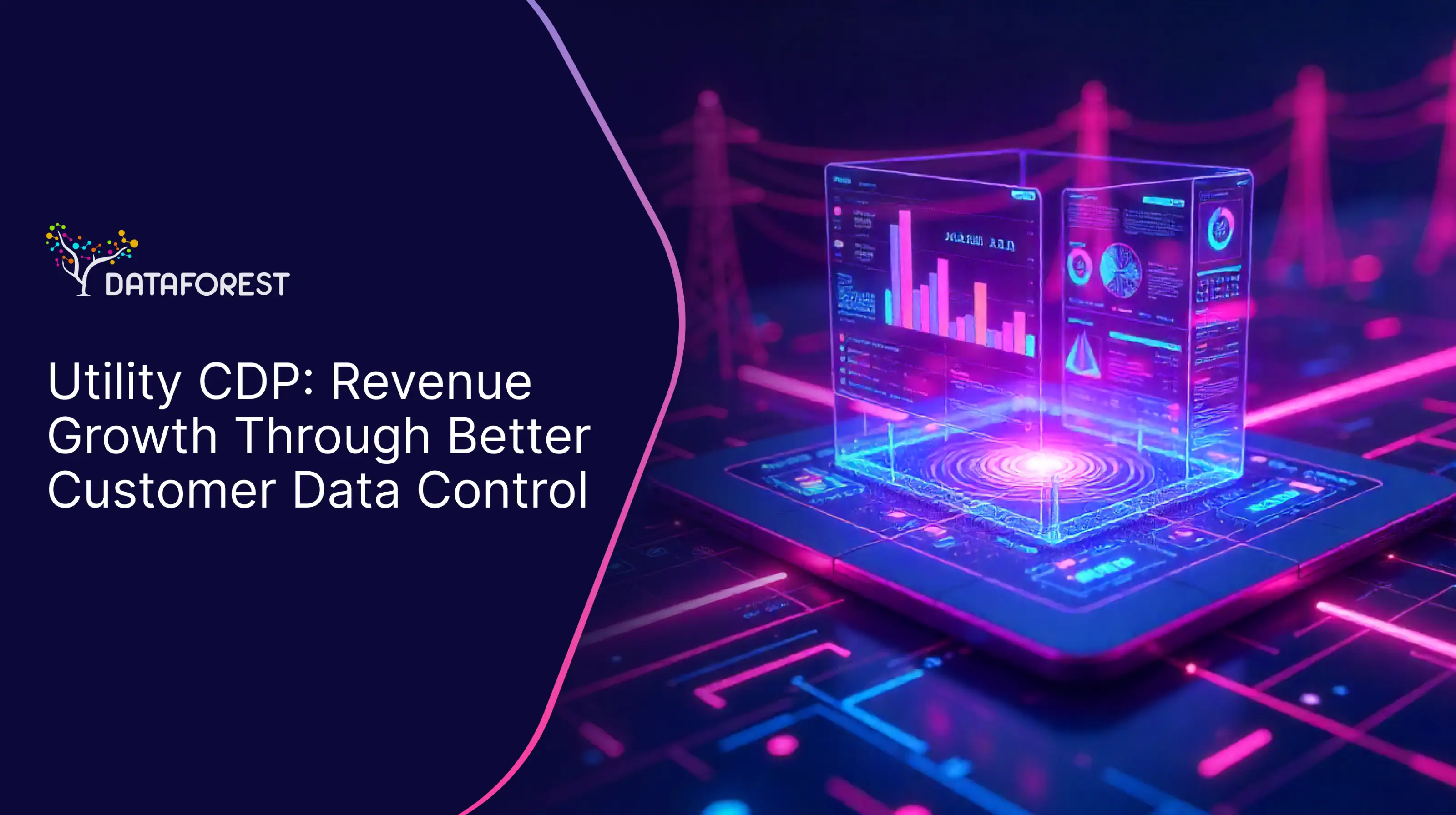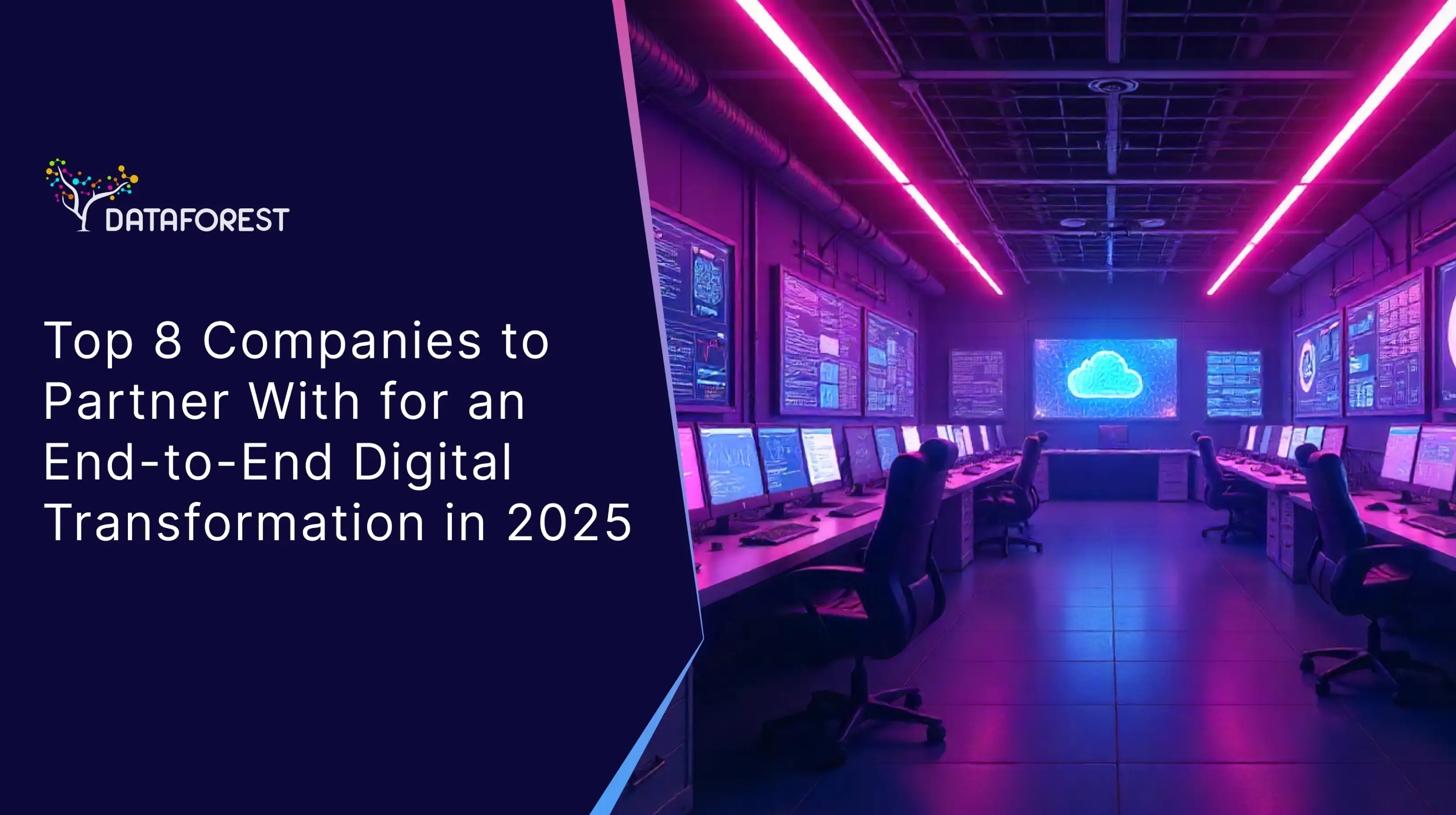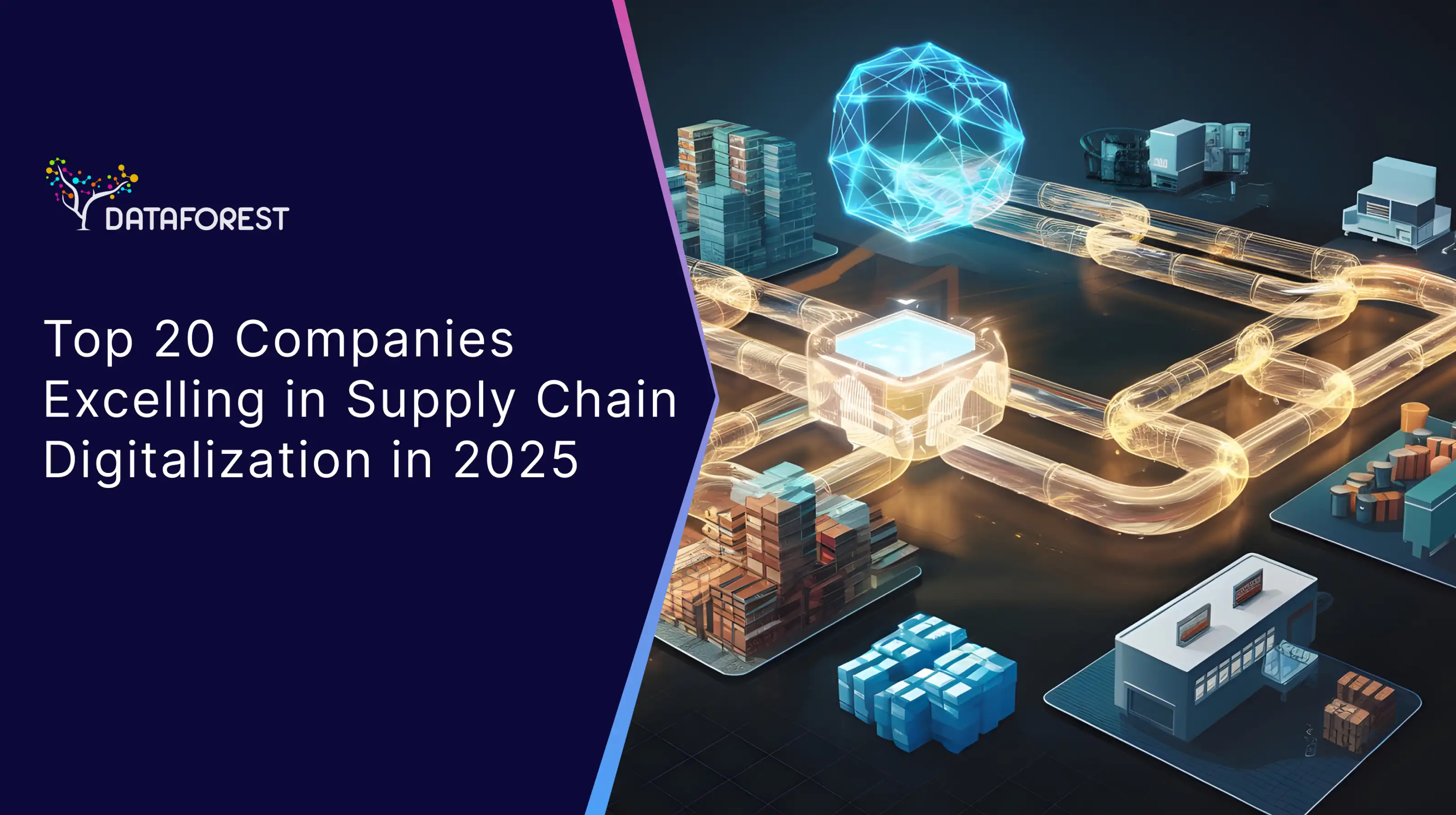A utility company struggled with churn because it couldn't tell which customers were about to leave. They installed a utility CDP that connected their billing, call center, and usage data, which let them identify at-risk customers and send targeted retention offers before cancellations spiked. Are you interested in utility digital transformation? Book a call.
.webp)
Why Do Traditional Tools Keep Failing Utilities Companies Where It Matters Most?
Standard software rarely survives the real-world complexity, scale, and data demands of utility operations.
Generic Software Meets Custom Utility Operations
Utilities don’t run on cookie-cutter processes. Each provider has a unique infrastructure setup, regulatory landscape, and operational rhythm. Out-of-the-box platforms assume standard workflows that rarely match the field. Customization is either impossible or so expensive that it breaks the budget. This mismatch creates workarounds, delays, and growing inefficiencies, which a customer data platform for utilities is designed to solve.
The Hidden Cost of Gaps in Data Engineering
Data in utilities isn't clean, complete, or neatly labeled—and traditional platforms struggle to handle it. Critical utility data integration pipelines break, integrations lag, and decisions are made without full context. Engineering teams end up firefighting data issues instead of building value. Over time, this slows innovation and adds technical debt. The result: costly blind spots in everything from maintenance to energy demand forecasting. A correctly implemented utility CDP removes these blind spots.
Real-Time Demand, Missed in Real Time
Traditional tools aren’t built for live grid responsiveness. They can’t process or act on real-time signals fast enough for today’s volatile demand patterns. That leads to missed savings, load imbalance, or even outages. Operators end up guessing or reacting late, which adds risk. Demand management strategies need systems like a utility CDP that adapt instantly—not tools that report after the fact.
What Makes a Utility CDP Different from the Traditional Ones?
Most CDPs are built for marketing teams—but utilities don’t work like that. A utility CDP is designed for technical teams, real-time infrastructure, and complex operational data, not just campaigns.
From Marketing CDPs to Utility CDPs
Traditional CDPs are designed to centralize customer data for campaign targeting, personalization, and analytics—mostly in retail or digital services. They’re built around short feedback loops, often within marketing tools, and rarely integrate with SCADA, AMI, or outage management systems. Utilities, however, operate in real-world systems with long timelines, regulatory constraints, and high reliability requirements. Their customer data spans field equipment, billing, usage, support, and behavior—but most CDPs don’t support that complexity. A utility CDP gives engineering and operations teams direct control over how data flows, what it connects to, and how it’s stored. This allows for more intelligent energy consumption optimization, outage response, and cross-channel personalization—without waiting for marketing platforms to catch up. The shift is about giving operations the same kind of data leverage marketers have had for years.
Why Utility CDPs Are Built for Developers
In a utility, data decisions can’t sit in a marketing dashboard—they need to run through systems, APIs, and field ops. A utility CDP is designed to be programmable, composable, and deeply integrated with infrastructure. They’re built around data engineers, backend developers, and systems architects who need to ship reliable workflows. That means command-line tools, schema evolution, live data ingestion, and the ability to model real-world entities like transformers or substations. It also means strict data privacy in utility CDPs, version control, and compliance with utility-grade standards. Marketing CDPs don’t offer this; they treat customers as browser sessions or email targets, not as people tied to infrastructure. Utility CDPs speak the language of engineers and planners, not campaign managers.
Which Data Use Cases Deliver ROI for Tech-First Companies?
Not every feature or tool delivers value where it matters. But some use cases consistently return real business results—whether it’s data-driven personalization utilities, tighter forecasting, lower risk, or smoother operations. They’re what leading tech-first companies are already doing to protect margin and scale faster.
Personalization That Drives Retention in SaaS and Digital Products
Pain point: Generic user experiences lead to weak engagement, low conversion, and high churn.
Solution: Personalization in utility services based on product usage, user behavior, and timing helps users discover value faster and stay longer.
Result: Better onboarding, targeted upsells, and relevant feature recommendations drive higher LTV and stronger retention. Teams get sharper insight into what users need and when—without relying on guesswork. Utility customer engagement tools help replicate this model for energy usage analytics and billing behavior.
Forecasting That Supports Smarter Planning in E-commerce and Retail
Pain point: Demand is hard to predict—seasonality, marketing spikes, and supplier variability throw off planning.
Solution: Forecasting based on real historical trends, current inputs, and short-term signals allows smarter inventory and supply chain decisions.
Result: Retailers reduce stockouts, avoid over-ordering, and protect margins without overextending warehousing. Marketing and ops teams align better when forecasts are grounded in real purchase behavior. Predictive analytics for utilities unlock growth at lower cost—just as a customer data platform for utilities does with energy demand forecasting.
Chargeback and Risk Detection That Protects Revenue in Fintech
Pain point: Chargebacks, fraud, and edge-case risks eat into margins and slow down growth.
Solution: Transaction monitoring, behavioral rules, and risk thresholds identify bad actors early and flag unusual patterns.
Result: Fintech platforms catch fraud faster, reduce false positives, and limit financial and reputational exposure. Risk teams can act before damage compounds. A similar framework within a utility CDP helps prevent billing disputes and detect anomalies using behavioral data for utilities.
Operational Improvements That Scale Marketplaces and Logistics Platforms
Pain point: Coordination breaks down as platforms grow—too many moving parts, missed handoffs, and reactive decisions.
Solution: Clear visibility, tighter workflows, and smarter rules keep dispatching, pricing, supply matching, and scheduling under control.
Result: Delivery gets faster, operations get leaner, and customers get what they expect. No more scaling chaos—just coordinated systems that grow with demand. These improvements often save money and unlock capacity— outcomes utility CDPs can mirror using smart grid personalization.
What Makes a Utility CDP Function Instead of Just Exist?
Most utility CDPs are expensive data graveyards. The difference between working systems and waste comes down to three core capabilities. Here's what separates functional platforms from consultant-enriching disasters.
Custom Data Pipelines with Built-in Recovery & Optimization
Your utility runs on 15 different systems that hate each other. Customer data lives in billing software from 2003, call center logs, smart meter readings, and payment processors. A working utility CDP doesn't just connect these systems—it builds custom bridges that survive when one system crashes or changes formats.
The recovery part matters because utility data never stops flowing. When your billing system goes down at 2 AM, your utility CDP keeps running with cached data. When it comes back online, the system catches up without losing transactions or creating duplicates.
Optimization means the pipelines get faster over time. Most data integration projects fail under their own weight after six months. Working utility CDPs learn which data transformations take forever and pre-process them during low-traffic hours.
The custom part is crucial because no two utilities have identical tech stacks. Off-the-shelf connectors break when your ancient mainframe spits out data in a format the vendor never imagined.
Real-Time Analytics for Immediate Action
Real-time customer insights mean you can spot problems while you can still fix them. A customer calls to complain about a bill spike—your service rep notices a change in their usage pattern three days ago because a pipe burst in their basement. That's valid real-time data.
Most "real-time" systems update every four hours and call it fast. Actual real-time processing in a utility CDP shows you what's happening within minutes of it occurring. This matters for outage management, fraud detection, and keeping angry customers from leaving.
The analytics have to trigger actions automatically, or they're worthless. High usage plus no payment in 30 days equals immediate enrollment in demand response programs. No human decision needed.
Speed without accuracy is chaos. The system has to distinguish between actual emergencies and data noise. A customer using twice their regular electricity might have bought a hot tub, not suffered equipment failure.
Your operations team needs dashboards that improve customer experience in the energy sector and can be read in 10 seconds. Complex visualizations that require training sessions are not utilized during crisis situations.
Modular Microservices You Control
Monolithic systems trap you with one vendor forever. Microservices let you replace pieces without rebuilding everything. Your billing integration can come from Vendor A, while your analytics engine comes from Vendor B—all inside your utility CDP.
Control means you own the data and the code that processes it. When vendors raise prices or add restrictions, you can move components to different providers. Most "flexible" platforms lock you in through proprietary formats and licensing tricks—utility CDPs break that cycle.
Each microservice handles one job well instead of doing everything poorly. Your customer communication service focuses on sending messages. Your usage analysis service focuses on finding patterns. Neither tries to be a complete solution.
The modules communicate through standard APIs you control. This prevents vendors from holding your utility marketing automation hostage. You can swap out underperforming components without approval from three different companies.
Modular design survives organizational changes and budget cuts. When priorities shift, you can pause expensive modules without breaking core functionality.
Key Technical Components
- Data ingestion pipelines with automatic failover
- Stream processing engines for live data analysis
- API gateway for secure system communication
- Event-driven messaging between services
- Containerized deployment for easy scaling
Business Control Elements
- Custom data transformation rules you modify
- Vendor-agnostic storage formats
- Open-source integration options
- Internal team training and documentation
- Performance monitoring with clear metrics
Why Would You Build Instead of Buy a Utility CDP?
Most utilities buy expensive platforms that work. Custom solutions cost more upfront but solve your specific problems. The question is whether you want control or convenience.
Custom Utility CDP
Your billing system charges differently for commercial vs residential customers. Your custom utility CDP knows these rules and processes accordingly. Off-the-shelf platforms make you explain your business logic through configuration screens that often fail to function correctly.
You control when updates happen—no surprise interface changes during peak billing season. Your development team fixes bugs immediately instead of waiting for vendor release cycles.
Data stays in your infrastructure under your security policies. You decide who gets access and for how long. Compliance audits become straightforward because everything runs in your environment.
Off-the-Shelf Platforms
Fast deployment if your business matches their assumptions. Most enterprises share common patterns for utility customer data management and billing cycles. Pre-built analytics dashboards work immediately for standard use cases.
Vendor handles security updates and infrastructure scaling. Your team focuses on using the system instead of maintaining it. Support comes with service level agreements and dedicated account management.
Feature development happens without your input or budget. Other customers drive the roadmap. Sometimes you get capabilities you need. Sometimes you pay for features you'll never use.
Select what you need and schedule a call.
How Does DATAFOREST Build Utility CDPs That Work?
We map your mess first, then build pieces that fit together into a fully functional utility CDP.
Custom Discovery Before Any Code Gets Written
DATAFOREST starts by documenting every system you currently use. We spend weeks understanding how your billing software talks to your CRM. This prevents expensive surprises six months into development. Most consultants assume they know utility operations. DATAFOREST maps your specific workflows before proposing a utility CDP solution. We learn why your team uses spreadsheets instead of the expensive software you bought last year—and how a utility CDP can eliminate those workarounds.
Component-Based Development with Clear Boundaries
Each microservice handles one job and does it entirely. Your customer data service manages profiles and preferences. Your usage analytics service processes meter readings and finds patterns. These components form the core of your utility CDP.
Services communicate through documented APIs that your team can understand. No black box integrations that break when vendors change terms. You get source code and deployment instructions for every utility CDP component.
Testing happens in isolation before services connect. A broken billing connector won't crash your customer portal. Your development team can fix problems without coordinating across multiple systems, keeping your utility CDP resilient.
End-to-End Integration That Survives Real Operations
Integration testing uses your actual data, not clean demo datasets. DATAFOREST loads your messiest customer records to find edge cases early because a real utility CDP needs to handle real-world complexity.
Training covers both normal operations and crisis management. Your team learns how to add new data sources, modify processing rules, and support AI in utility customer management. Documentation explains why decisions were made—not just how to use features inside your utility CDP.
Go-live happens gradually with rollback plans for each step. Customer service gets the new system first. Billing integration comes after everything else works reliably, ensuring your utility CDP doesn’t disrupt operations.
CDPs Don't Fix Bad Management
Forbes lists three main CDP shortcomings:
- Multiple CDPs across business units cause data duplication, weak governance, and unclear accountability.
- Consent and compliance are often overlooked; systems often assume clean, consented data, creating legal risk.
- Batch processing delays decision-making; ideal CDPs should allow real‑time personalization and data flow.
Don’t treat a utility CDP as a silver bullet. It’s not about collecting more data—it's about connecting the correct data and using it at the right moment with the proper guardrails. If your governance is sloppy and your consent tracking is broken, no utility CDP will save you.
Please complete the form to consolidate scattered customer data into a utility CDP.
FAQ On Utility CDP
How do we know if we need a utility CDP instead of a traditional BI or analytics tool?
BI tools show you what happened last month in pretty charts. A utility CDP lets you act on what's happening right now to specific customers. If you're trying to prevent churn or personalize billing offers, you need real-time customer profiles, not historical reports.
Can a utility CDP support real-time use cases like instant job alerts or fraud triggers?
Only if you build the utility CDP for real-time processing from day one, most CDPs are glorified data warehouses that update every few hours. Accurate real-time means alerts fire within minutes of suspicious activity, not during your next batch job.
How does a utility CDP improve internal processes like loyalty programs, fleet tracking, or chargeback management?
It connects scattered data so you can see the complete customer picture. Your loyalty program knows payment history and service calls. Fleet tracking connects to customer locations and usage patterns. Chargeback management sees which customers dispute bills repeatedly before they escalate—all thanks to insights surfaced through your utility CDP.
Can we integrate a utility CDP with our existing internal systems—even if they're custom-built?
Integration depends on whether your systems have APIs or data exports. Custom systems often have undocumented databases and weird data formats. Plan for months of discovery work and custom connector development if your systems are truly unique, but a flexible utility CDP will support this kind of tailored integration.
We have no in-house data team—can a utility CDP still be a viable solution?
Not without hiring people or paying consultants forever. CDPs need constant maintenance, data quality monitoring, and business rule updates. You can't buy your way out of needing data expertise on your team, but you can build a manageable, well-documented utility CDP with the right partner. There will be utility data platform benefits.







.svg)
















